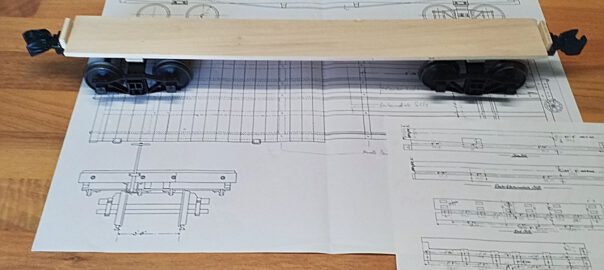Before I start the actual construction of my planned flatcars, I’d like to know first which limits the tracks will pose on them. I’ve only ever known classic model waggons, which have their couplers on beams attached to the bogies. This design ensures high operational reliability because the couplers can follow even the tightest curve radii. However, it’s not a pretty sight.
So I’d like to build a few test waggons in order to learn how the couplers perform when attached to the waggon’s body.
To build these test waggons, I’m using some old plywood found in my leftover box. Their only purpose is to test different waggon lengths and their behaviour on actual track.
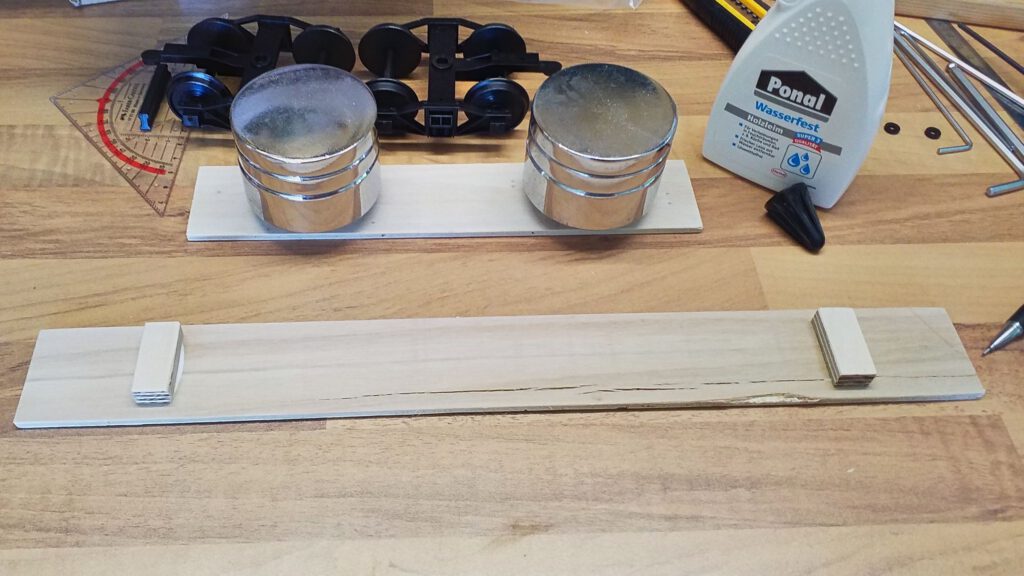
Two small deadblocks are glued to these simple waggon bodies. The knuckle couplers are screwed onto them, with the screws being long enough to gain hold in the body. That lends the whole contraption the needed stability. Meanwhile, the bogies mady by Piko have arrived and after fitting them out with steel wheelsets, they are being mounted with a wood screw.
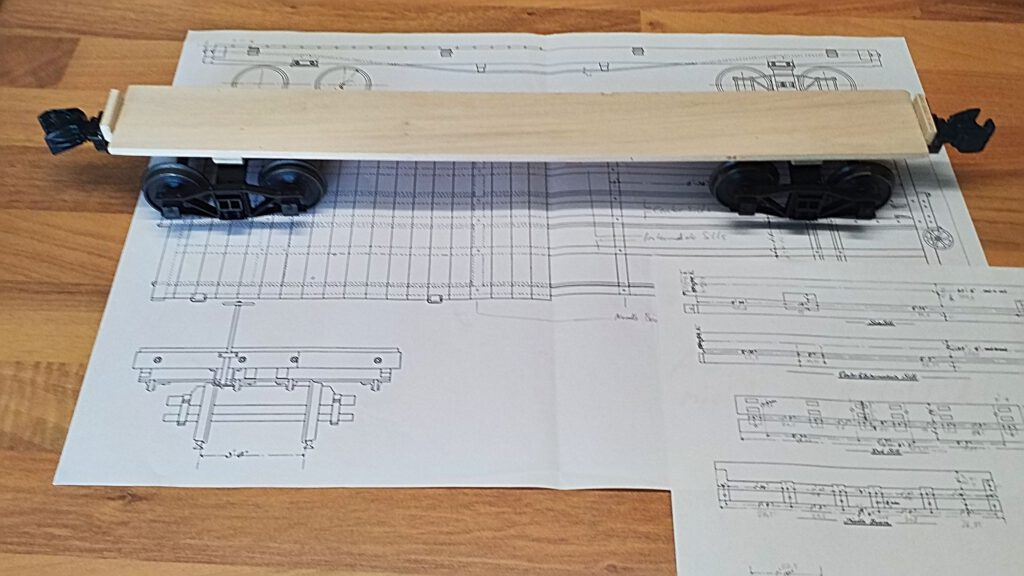
In less than one hour four such waggon bodies were prepared. The first pair have got a length of 40 cm, representing 26′ as defined by my diagrams from Union Pacific Historical Society. These waggons labor by the skin of their flanges through a curve made from R1-tracks by LGB, which sport a 600 mm curve radius. In order to avoid derailments, easements, made from R2 curves (780 mm radius) are necessary. S-curves are a complete no-go unless one adds a piece of straight track into the curve.
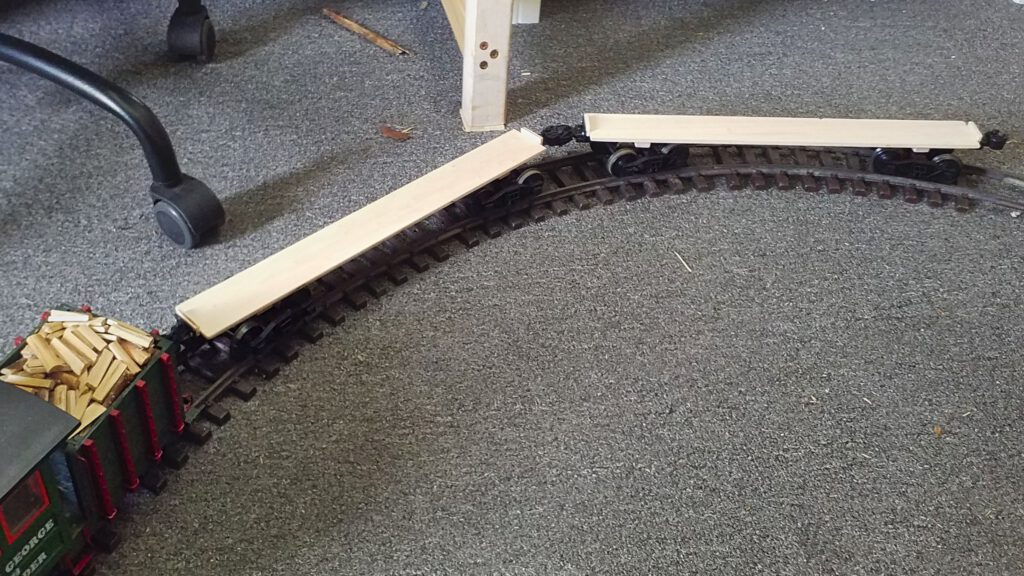
The second pair boast 24 cm of length, representing 16′ waggons. That’s about the shortest piece of freight waggon that I could find during a swift online research. Those have absolutely no problem to navigate R1 S-curves. So they will obviously have the advantage during visits on other people’s layouts.
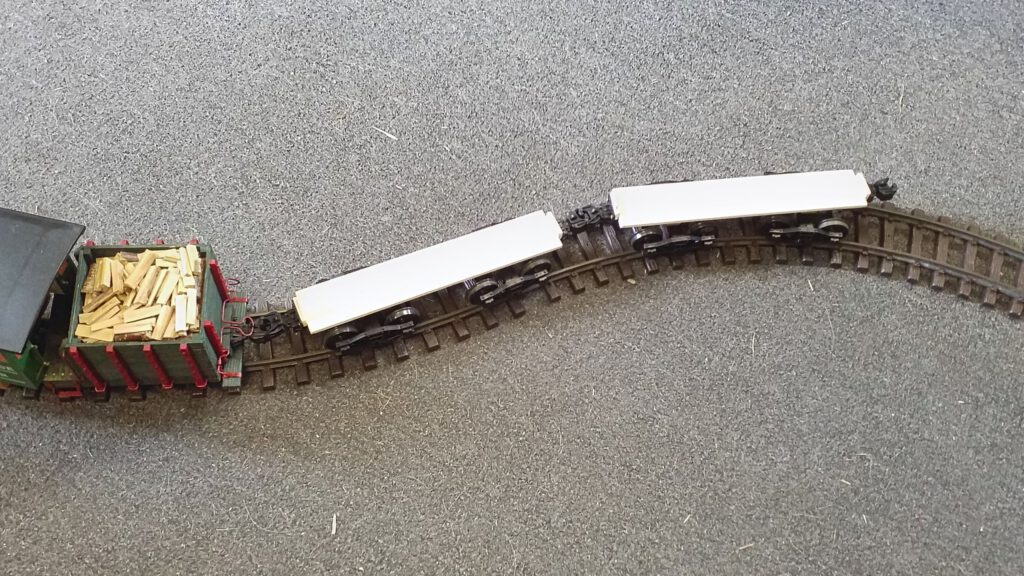
Nevertheless, I’m going to build the 26′ flatcars. For the next operating session I’m going to use the Piko bogies anyway and I will mount some LGB hook and loop couplers, AKA “bottle openers”. That will allow us to swap waggons between train sets.
Otherwise I will wait for the operation session and gain some experience bevor I ultimately decide on my coupling system. Next time I will proceed with building the frame.

